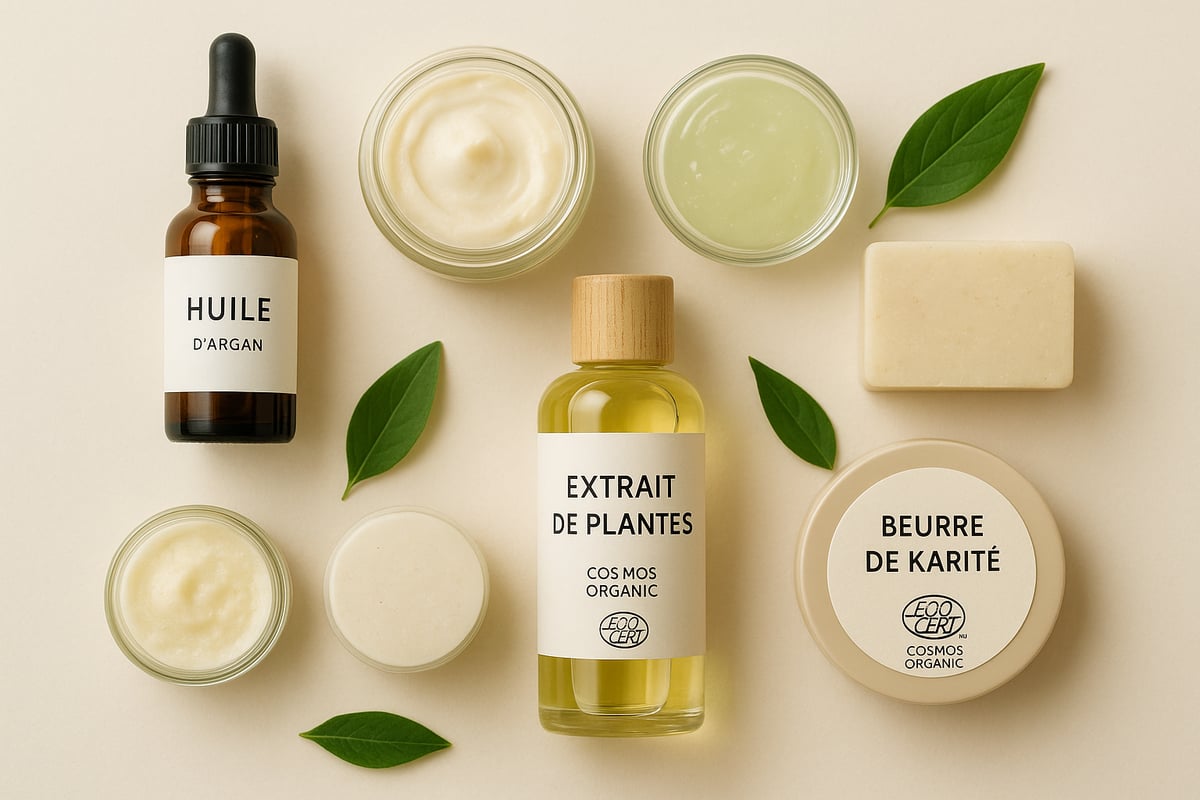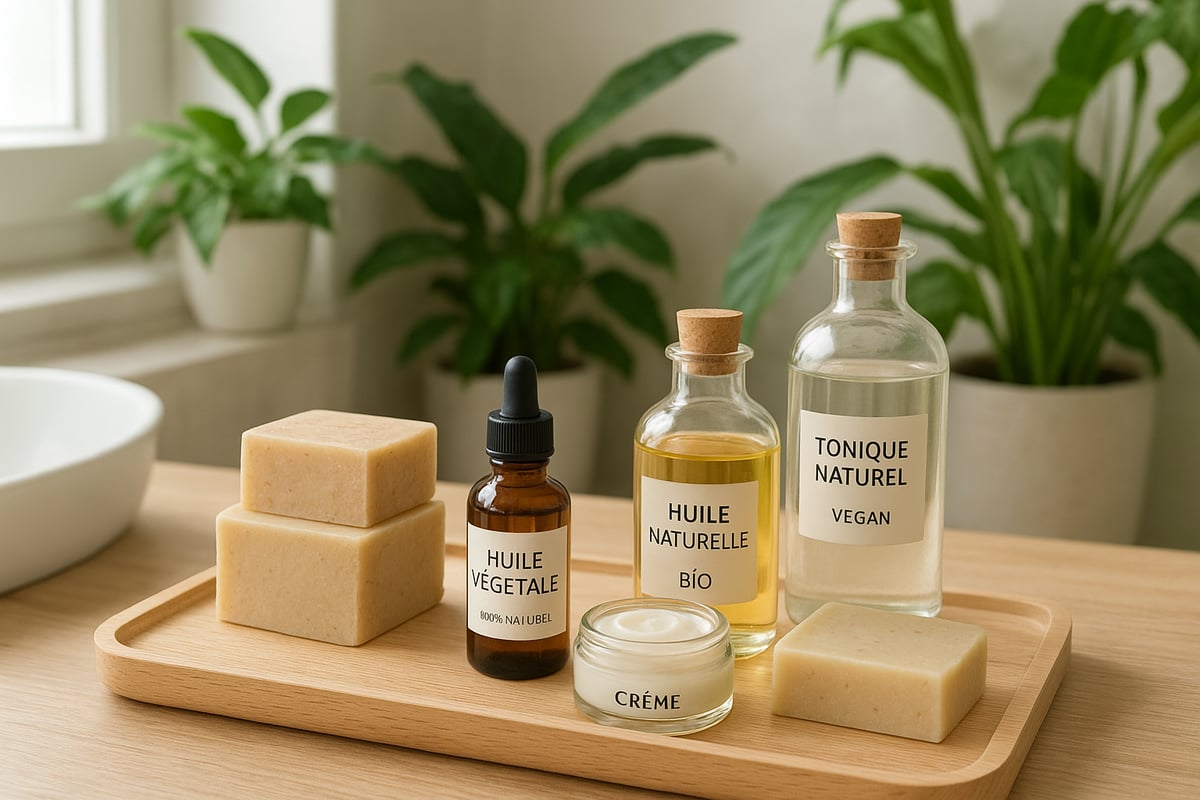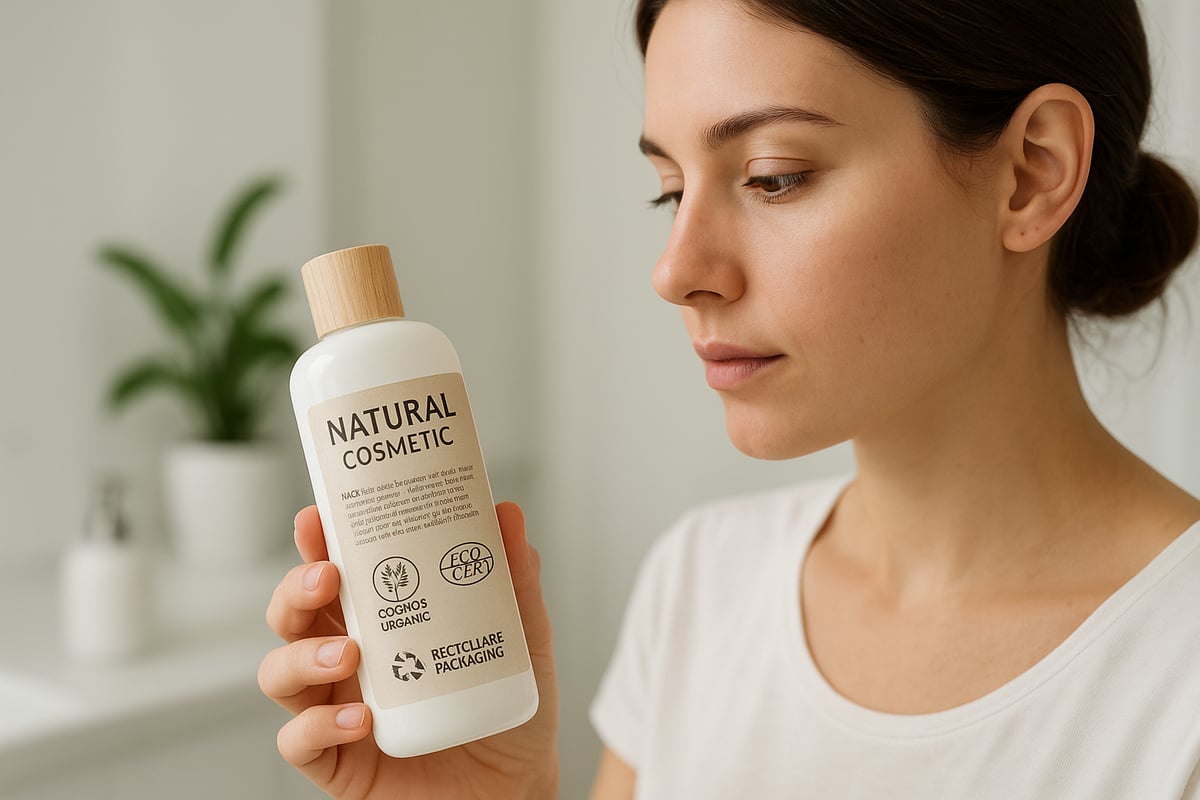Complete Natural Cosmetic Product Guide 2025

Faced with the climate emergency and health challenges, natural cosmetic products are establishing themselves as the new beauty benchmark in 2025. Consumers are now looking for healthier and more environmentally friendly solutions, adopting a routine that takes care of their skin while preserving the planet.
This article guides you step by step to understand, choose and easily integrate the natural cosmetic product adapted to your needs. You will discover the precise definition of these products, the essential criteria for selecting them correctly, the notable trends for 2025, as well as practical advice and concrete examples to transform your routine.
Ready to explore more conscious and innovative beauty? Follow this complete guide to adopt an effective natural routine, beneficial for your well-being and that of the planet.
What is a Natural Cosmetic Product?
A natural cosmetic product is defined by European regulation ISO 16128. This standard specifies that it must contain at least 95% ingredients of natural origin, such as vegetable oils, butters or plant extracts. Unlike conventional cosmetics, it excludes controversial substances such as parabens, silicones, sulfates or synthetic dyes.
It is important to distinguish the terms: a natural cosmetic product is not systematically organic, vegan or from clean beauty. Here is a summary of the differences:
| Term | Main definition |
|---|---|
| Natural | Ingredients of natural origin |
| Organic | Ingredients from certified organic farming |
| Vegan | No ingredients of animal origin |
| Clean beauty | Formula without controversial ingredients |
Labels such as Cosmos, Ecocert, Natrue or Cosmébio guarantee the quality and traceability of these products. Among the key ingredients, we find:
- Vegetable oils (jojoba, argan)
- Natural butters (shea, cocoa)
- Plant extracts and essential oils
According to a recent study, 68% of French consumers now favor a natural cosmetic product for their beauty routine (Consumption of organic cosmetics in France in 2023). Typical formulations, such as an aloe vera-based moisturizing cream or a superfatted soap, offer proven benefits for the skin: hydration, protection and optimal tolerance.
A well-chosen natural cosmetic product respects the skin, the environment and meets the expectations of committed consumers.

Why Adopt Natural Cosmetics in 2025?
Adopting a natural cosmetic product in 2025 means above all choosing a beauty routine that respects your health. Gentle formulas reduce the risk of allergies and ensure better skin tolerance. In addition, they preserve the microbiome, essential for the balance of the skin.
On the environmental side, the approach is just as virtuous. The ingredients of natural origin are mainly biodegradable and sourced responsibly. Committed brands favor eco-designed packaging, limiting the impact of plastic waste on the planet.
The year 2025 promises to be rich in innovations for natural cosmetic products. We are seeing the rise of upcycled ingredients, green biotechnologies and minimalist formulas. Regulations are evolving, gradually banning certain controversial chemical components. To explore these advances in more detail, consult the analysis on cosmetic trends 2025: natural ingredients and biotechnology.
Consumers are increasingly attentive to ethics, with three out of four French people scrutinizing the commitment of brands before purchasing. Testimonials highlight the positive effects of a transition to natural, but certain challenges remain: conservation, effectiveness and sometimes higher prices. Choosing wisely allows you to fully benefit from the benefits while supporting more responsible beauty.

How to Choose a Natural Cosmetic Product?
Choosing a quality natural cosmetic product requires particular attention to several essential criteria. The goal is to ensure that each product respects both your skin and the environment, while meeting your expectations in terms of performance and ethics.

Read and Understand Labels
Deciphering the label of a natural cosmetic product is a key step. The INCI (International Nomenclature of Cosmetic Ingredients) list indicates all the components, from the most concentrated to the least present. Favor ingredients of plant origin, easily identifiable: oils, butters, plant extracts.
To differentiate natural active ingredients from synthetic ones, look for the mention of the percentage of natural origin. Transparent brands often display this information, and offer a wide range illustrated on Green Spa natural cosmetics collections. Avoid long lists and controversial components like parabens or silicones.
The Labels and Certifications to favor
Labels are reliable benchmarks when choosing a natural cosmetic product. Cosmos, Ecocert, Natrue and Cosmébio guarantee a predominantly natural composition, the absence of ingredients from petrochemicals, and environmentally friendly manufacturing processes.
| Label | Natural (%) | Organic (%) | Main criteria |
|---|---|---|---|
| Cosmos | >95 | >10 | Natural origin, organic |
| Ecocert | >95 | >10 | Strict control, transparency |
| Natrue | >95 | >20 | Authenticity, ethics |
Always check the presence of these labels on the packaging.
Adapt the Product to Your Skin Type and Needs
To find the ideal natural cosmetic product, consider your skin type and your specific needs. Dry skin will appreciate nourishing oils and vegetable butters, while oily skin will prefer light textures based on hydrosols or aloe vera.
Sensitive skin should opt for formulas without perfume or irritating essential oils. For a personalized routine, combine a gentle cleanser, targeted serum and suitable cream, while observing your skin's reactions.
Take into account the Environmental and Ethical Impact
The environmental impact of a natural cosmetic product is measured through its packaging, its production method and the brand's commitment. Favor recyclable or refillable packaging, fair trade ingredients and local sourcing.
Choose brands involved in the circular economy and waste reduction. Also analyze their CSR (Corporate Social Responsibility) policy to support truly sustainable beauty.
The Major Trends in Natural Cosmetics in 2025
The year 2025 marks a turning point for natural cosmetic products. Consumers seek authenticity, efficiency and positive impact, guiding the industry towards innovative and responsible practices.

Explosion of minimalist formulas
“Less is more” is essential: short formulations, without superfluous, seduce with their simplicity and transparency. Each natural cosmetic product relies on essential active ingredients, reducing the risk of allergies and strengthening user confidence.
Green biotechnology and innovative active ingredients
Green biotechnology is revolutionizing the sector in 2025. Fermentation, algae extracts or microorganisms provide efficient and sustainable solutions. These advances allow the creation of new textures and highly targeted treatments.
Solid care and zero waste
Solid care is growing by more than 25% in France. Shampoos, make-up removers and solid soaps replace classic formats. Biodegradable and refillable packaging is becoming the norm, limiting the plastic footprint.
Local ingredients and advanced customization
Short circuits and local ingredients are gaining popularity, promoting traceability and the regional economy. Personalization is becoming more refined: digital diagnostics and tailor-made formulas meet each specific need.
Innovative brands and vision of the future
Young French and international brands stand out for their creativity and commitment. To discover more trends and innovations, visit Wellness and spa market trends 2025, an essential resource for following the evolution of natural cosmetic products.
Practical Guide: Integrating Natural Cosmetics into Your Routine
Adopting a natural cosmetic product into your daily routine transforms your approach to beauty. Here is a practical guide to successfully make this transition, step by step, and take full advantage of the benefits of natural cosmetics.
Step 1: Sort out your bathroom
Start by identifying conventional products to replace first, such as cleansers, moisturizers or hair care products. Favor a gradual transition to avoid waste.
- List your current products.
- Look out for those with controversial ingredients.
- Replace them as they end.
This approach facilitates the integration of a natural cosmetic product while respecting your pace.
Step 2: Select natural essentials
Opt for a minimalist routine with natural essentials, adapted to your needs.
- Vegetable cleansing oil
- Artisanal superfatted soap
- Organic moisturizing cream
- Mineral sun protection
Choose each natural cosmetic product according to your skin type to guarantee effectiveness and comfort on a daily basis.
Step 3: Adapt use and observe results
Give your skin time to adapt to these new, gentler formulas. Temporary reactions are possible but often fleeting.
- Apply treatments regularly.
- Adjust the frequency according to the reactions.
- Note the changes in your skin.
Regularity and observation are essential to evaluate the effectiveness of natural products.
Step 4: Go further with DIY and self-care
Experiment with simple recipes based on natural ingredients to personalize your home treatments. Prepare masks or scrubs adapted to your needs.
- Use pure vegetable oils.
- Respect the dosages of essential oils.
- Choose reliable natural preservatives.
For more inspiration and practical tips, check out Tips and news on natural beauty.
Resources and Tools to Deepen Your Knowledge
To explore the world of natural cosmetic products, there is a multitude of reliable resources and practical tools. Start by consulting consumer review platforms like INCI Beauty or Que Choisir. These sites decipher the compositions and offer useful comparisons to choose in complete transparency.
Mobile applications such as Yuka or Clean Beauty make it easy to scan packaging and identify the quality of a natural cosmetic product before purchase. The use of these digital tools is part of a growing trend, supported by growth of the global natural cosmetics market in 2024.
To learn more, follow specialized blogs and influencers who share advice, routines and analysis of new products. The reference books and practical guides published in 2025 also offer solid foundations for understanding the challenges of the sector.
Do not hesitate to consult the sites of associations and certification bodies, which publish news on regulations, labels and innovations. Podcasts and specialist webinars are excellent sources for staying informed of developments, while forums and support groups allow you to exchange experiences and tips with an engaged community.
By multiplying these sources, you develop a complete and critical vision to select each natural cosmetic product according to your values and needs.
After exploring together the keys to adopting a natural beauty routine, it is normal to want to deepen your knowledge or ask specific questions adapted to your situation. Whether you are just starting out in the world of organic cosmetics or are already committed to a healthier and more environmentally friendly approach, I invite you to go further. Take advantage of reliable resources and personalized advice to choose the best products suited to your needs and values.
To find out more



